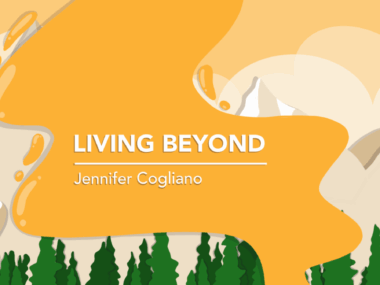Finding balance in life after a double-lung transplant
Post-transplant life is a delicate dance that requires fortitude and support
Written by |

To follow my column last week about the rate of divorce after surviving advanced cystic fibrosis (CF) and double-lung transplant, this week I’ll focus on the intricate balance of living while dying.
Don’t get me wrong, the improvement in my lung health since my transplant four years ago has been one of the best gifts I’ve ever received. The Cystic Fibrosis Foundation says that living with CF is like breathing through a straw without taking a break. I lived for years feeling that way, to the point that I could barely breathe long enough to stand in the shower for a few minutes without needing to sit and take a break before I could attempt to put on my clothes.
Now, I can breathe again. No words can explain the miracle of relief from that feeling of suffocation. I don’t think anyone can fully appreciate this unless they’ve lived with a chronic lung disease.
Close family members and friends understand, though. The’ve seen my struggle to live prior to transplant. They fully appreciate the miracle that a successful transplant provides. They want to learn about the lifestyle changes that accompany transplant life. They encourage and support anything that will help improve my health, and they understand that this new health of mine isn’t guaranteed.
As the one living on this massive roller-coaster ride, I’ve found it hard to digest it all: the daily struggle to breathe; the decrease in my energy and quality of life; the emotional implications of end-of-life preparations and getting my affairs in order at the age of 45; the mental effects of receiving a phone call and within two hours having to lie on an operating table, hoping I’ll wake up on the other side of surgery. Then, eventually, not only being able to breathe more easily, but also feeling like I have my life back.

Jennifer Bleecher, right, acknowledges the importance of having a strong support system post-transplant. Hers is composed of her daughter, Claudia Hannum, left, and her mother, Melody Limeburner. (Courtesy of Jennifer Bleecher)
Transplant life requires understanding the new rules of living, which include avoiding certain foods and activities, acknowledging the severely immunocompromised state of my body and the associated risks, and facing the uncertainty of this temporary health. It puts a strain on other organs and systems of the body, including the kidneys, the white blood cells, and blood pressure. It means facing potential complications from medications and other things that can be lifelong in nature.
That’s where balance comes into play. Do we jump with two feet into life again, including work and other potential stressors? Do we strictly adhere to the new rules of post-transplant life, especially in this modern world of COVID-19 and other threats? Do we continue to live in isolation to protect our respiratory health, which can lead to anxiety and depression?
Everyone’s CF and transplant journeys are unique. There is no one-size-fits-all. There are no definitive guidelines on how to return to the living while also realizing that your time is still limited. The scientific miracle of lung transplant has limits.
Transplantation is not a cure. It is a treatment option that allows for more time. Those of us who have been through it must navigate this new world together with the people around us. It is a fragile world.
We face daily decisions like whether or not we should go to that concert, host a family get-together when someone might have a cold, or rejoin the workforce when it could cause germ exposure and affect our health insurance coverage and disability eligibility. We must decide whether to wear a mask in public to protect this gift of life, knowing that others might stare or judge.
Not everyone understands these intricate details, but those who sincerely care do. The bottom line is that this is my path to walk on what feels like a tightrope. I cherish the people who understand the difficulty and importance of maintaining balance.
Is it all worth it? In my experience, yes. One hundred times over. And having people around me who fully understand this delicate balance is just as crucial.
Note: Cystic Fibrosis News Today is strictly a news and information website about the disease. It does not provide medical advice, diagnosis, or treatment. This content is not intended to be a substitute for professional medical advice, diagnosis, or treatment. Always seek the advice of your physician or other qualified health provider with any questions you may have regarding a medical condition. Never disregard professional medical advice or delay in seeking it because of something you have read on this website. The opinions expressed in this column are not those of Cystic Fibrosis News Today or its parent company, Bionews, and are intended to spark discussion about issues pertaining to cystic fibrosis.







Leave a comment
Fill in the required fields to post. Your email address will not be published.